Abstract
A method is described for indirect immunofluorescent staining of mouse T cells forming rosettes, involving fixation of rosettes by glutaraldehyde and staining with a rabbit anti-mouse brain serum absorbed so as to be specific for T cells. Using this technique, it was shown that about 44% of spleen cells forming rosettes with sheep erythrocytes both in non-immunized and immunized mice, are T cells. The number of T rosette-forming cells increased about ten-fold after immunization with sheep erythrocytes, but only when serum antibody was detectable.
Full text
PDF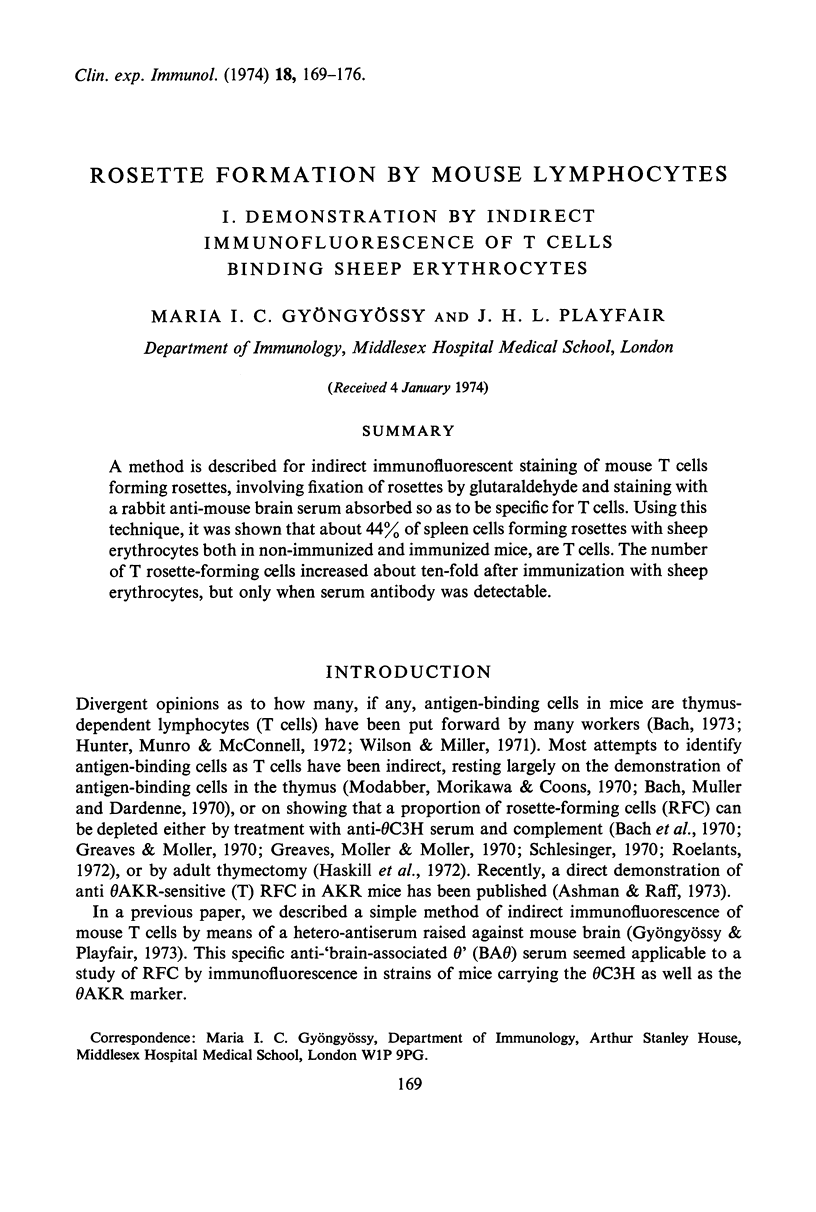
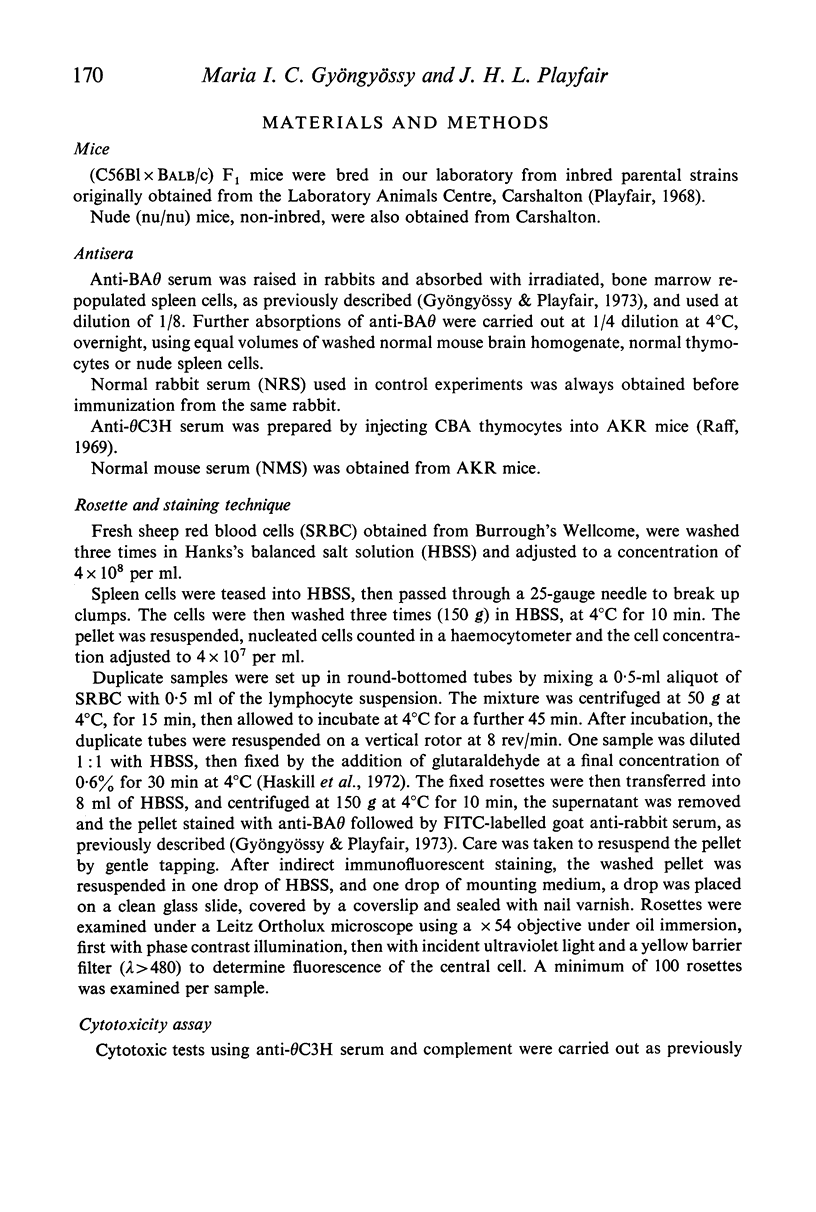
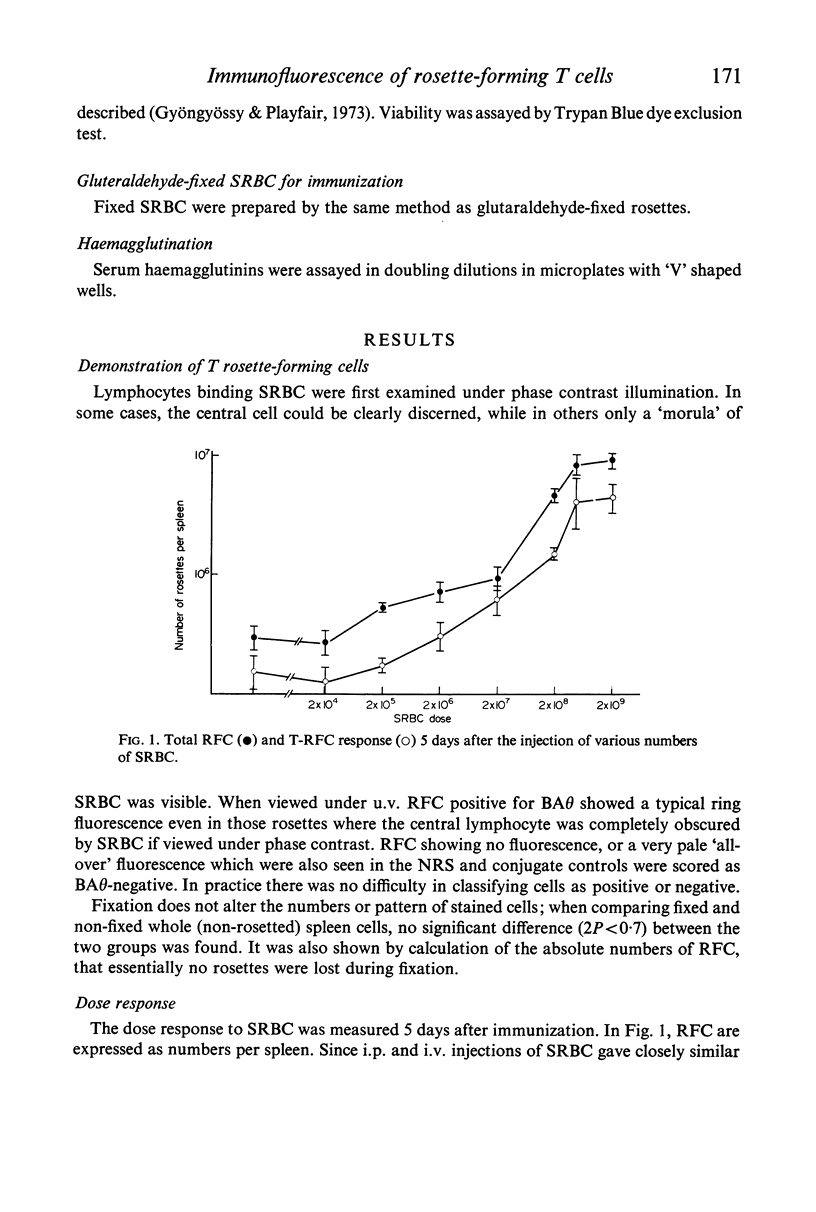
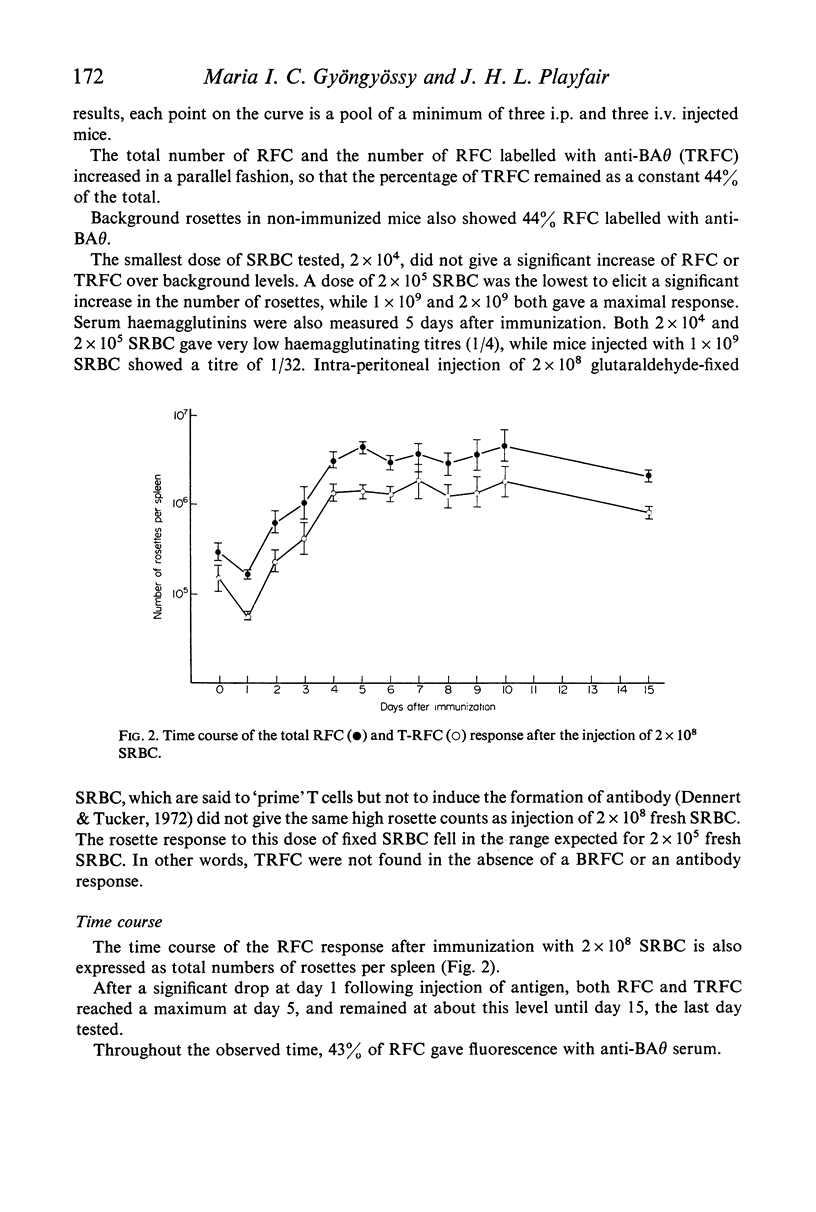
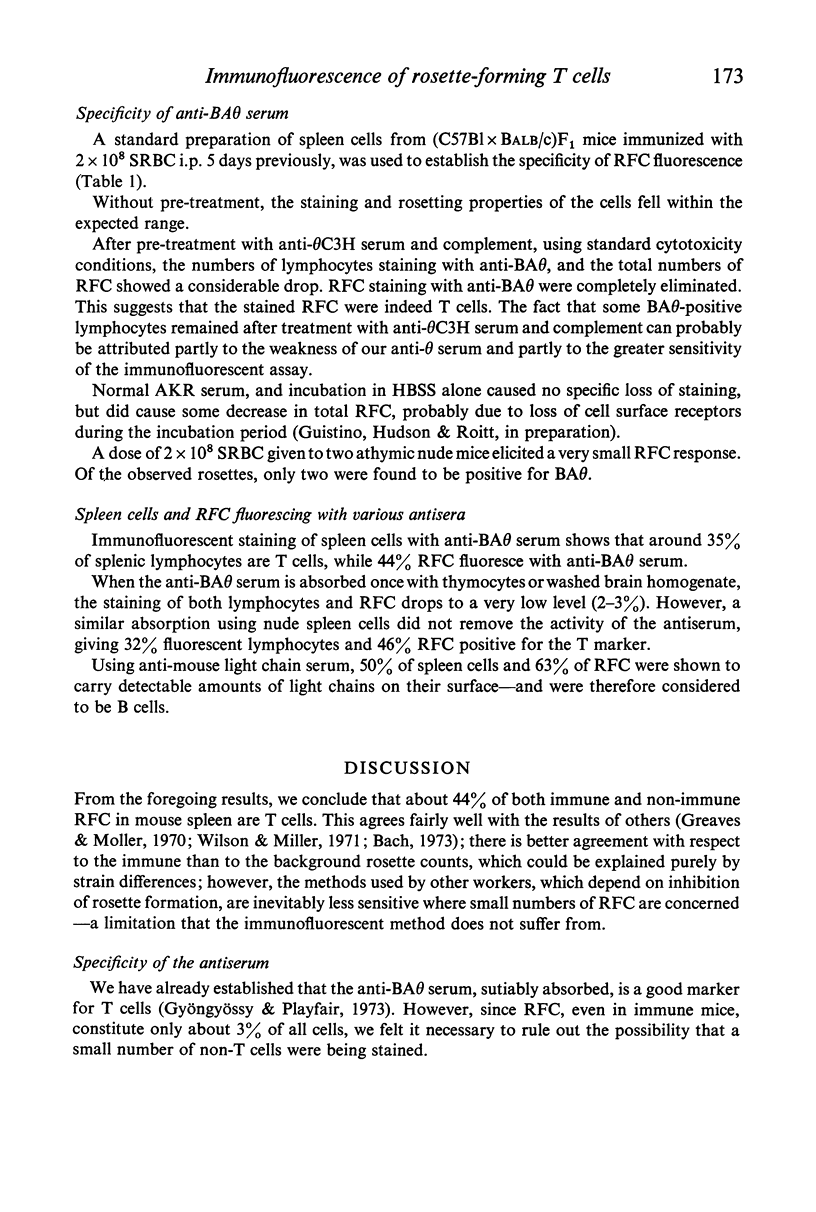
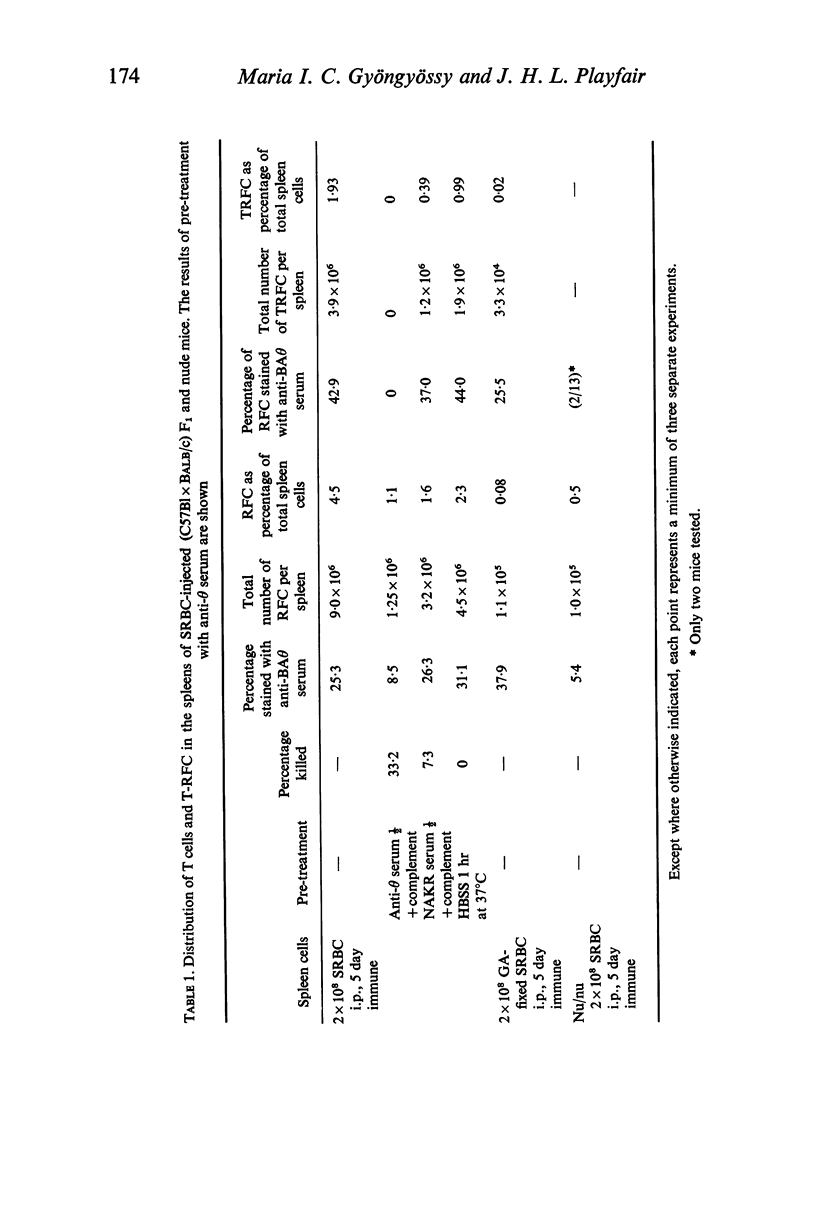
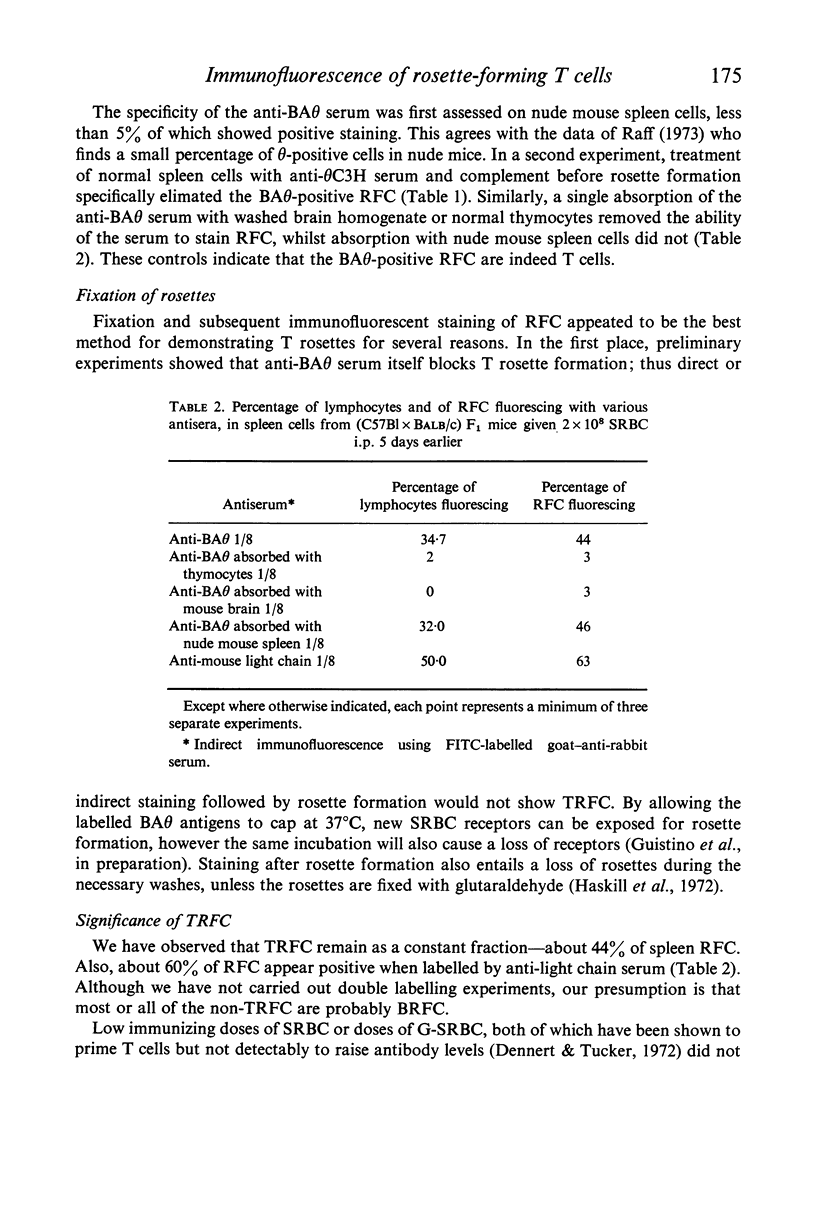
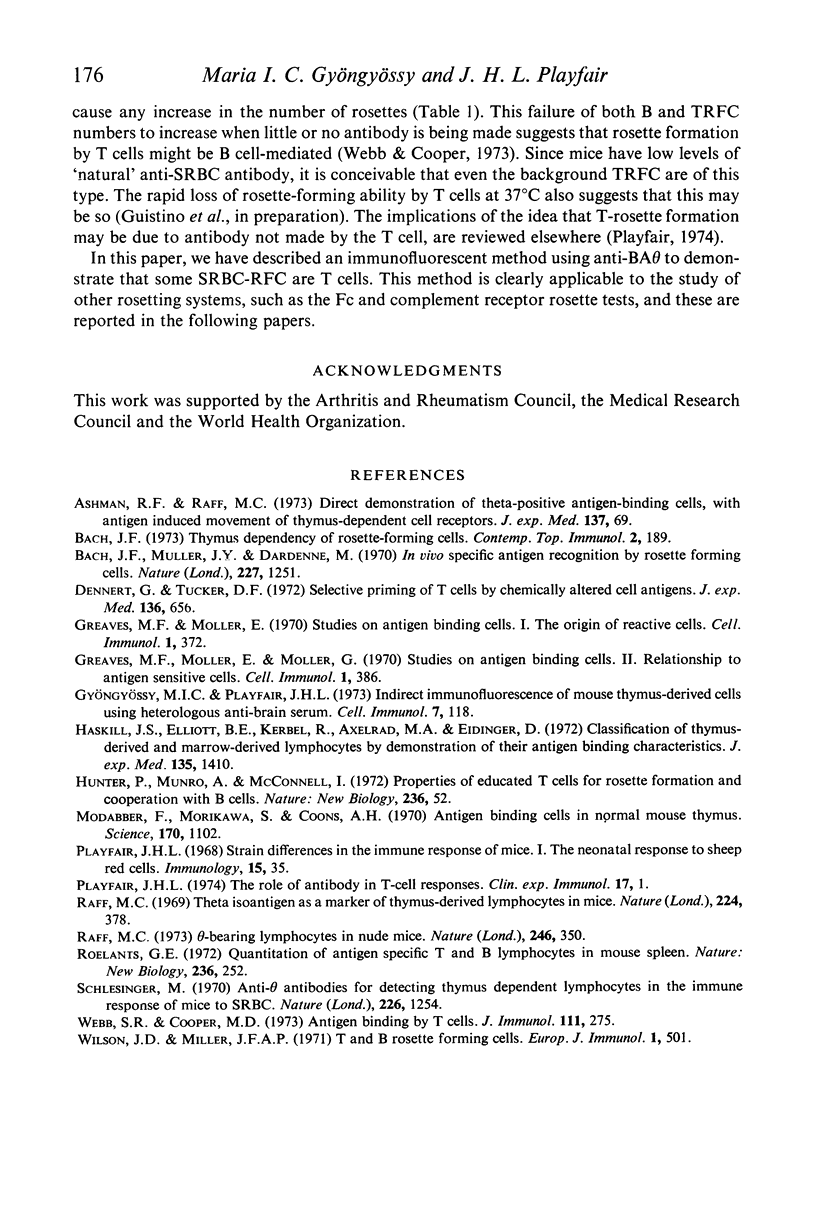
Selected References
These references are in PubMed. This may not be the complete list of references from this article.
- Ashman R. F., Raff M. C. Direct demonstration of theta-positive antigen-binding cells, with antigen-induced movement of thymus-dependent cell receptors. J Exp Med. 1973 Jan 1;137(1):69–84. doi: 10.1084/jem.137.1.69. [DOI] [PMC free article] [PubMed] [Google Scholar]
- Bach J. F., Muller J. Y., Dardenne M. In vivo specific antigen recognition by rosette forming cells. Nature. 1970 Sep 19;227(5264):1251–1252. doi: 10.1038/2271251a0. [DOI] [PubMed] [Google Scholar]
- Dennert G., Tucker D. F. Selective priming of T cells by chemically altered cell antigens. J Exp Med. 1972 Sep 1;136(3):656–661. doi: 10.1084/jem.136.3.656. [DOI] [PMC free article] [PubMed] [Google Scholar]
- Greaves M. F., Möller E., Möller G. Studies on antigen-binding cells. II. Relationship to antigen-sensitive cells. Cell Immunol. 1970 Oct;1(4):386–403. doi: 10.1016/0008-8749(70)90016-x. [DOI] [PubMed] [Google Scholar]
- Greaves M. F., Möller E. Studies on antigen-binding cells. I. The origin of reactive cells. Cell Immunol. 1970 Oct;1(4):372–385. doi: 10.1016/0008-8749(70)90015-8. [DOI] [PubMed] [Google Scholar]
- Gyöngyössy M. I., Playfair J. H. Indirect immunofluorescence of mouse thymus-derived cells using heterologous anti-brain serum. Cell Immunol. 1973 Apr;7(1):118–123. doi: 10.1016/0008-8749(73)90187-1. [DOI] [PubMed] [Google Scholar]
- Haskill J. S., Elliott B. E., Kerbel R., Axelrad M. A., Eidinger D. Classification of thymus-derived and marrow-derived lymphocytes by demonstration of their antigen-binding characteristics. J Exp Med. 1972 Jun 1;135(6):1410–1415. doi: 10.1084/jem.135.6.1410. [DOI] [PMC free article] [PubMed] [Google Scholar]
- Modabber F., Morikawa S., Coons A. H. Antigen-binding cells in normal mouse thymus. Science. 1970 Dec 4;170(3962):1102–1104. doi: 10.1126/science.170.3962.1102. [DOI] [PubMed] [Google Scholar]
- Playfair J. H. Strain differences in the immune response of mice. I. The neonatal response to sheep red cells. Immunology. 1968 Jul;15(1):35–50. [PMC free article] [PubMed] [Google Scholar]
- Playfair J. H. The role of antibody in T-cell responses. Clin Exp Immunol. 1974 May;17(1):1–18. [PMC free article] [PubMed] [Google Scholar]
- Raff M. C. Theta-bearing lymphocytes in nude mice. Nature. 1973 Dec 7;246(5432):350–351. doi: 10.1038/246350a0. [DOI] [PubMed] [Google Scholar]
- Raff M. Theta isoantigen as a marker of thymus-derived lymphocytes in mice. Nature. 1969 Oct 25;224(5217):378–379. doi: 10.1038/224378a0. [DOI] [PubMed] [Google Scholar]
- Schlesinger M. Anti-theta antibodies for detecting thymus-dependent lymphocytes in the immune response of mice to SRBC. Nature. 1970 Jun 27;226(5252):1254–1256. doi: 10.1038/2261254a0. [DOI] [PubMed] [Google Scholar]
- Webb S. R., Cooper M. D. T cells can bind antigen via cytophilic IgM antibody made by B cells. J Immunol. 1973 Jul;111(1):275–277. [PubMed] [Google Scholar]
- Wilson J. D., Miller J. F. T and B rosette-forming cells. Eur J Immunol. 1971 Dec;1(6):501–503. doi: 10.1002/eji.1830010622. [DOI] [PubMed] [Google Scholar]


